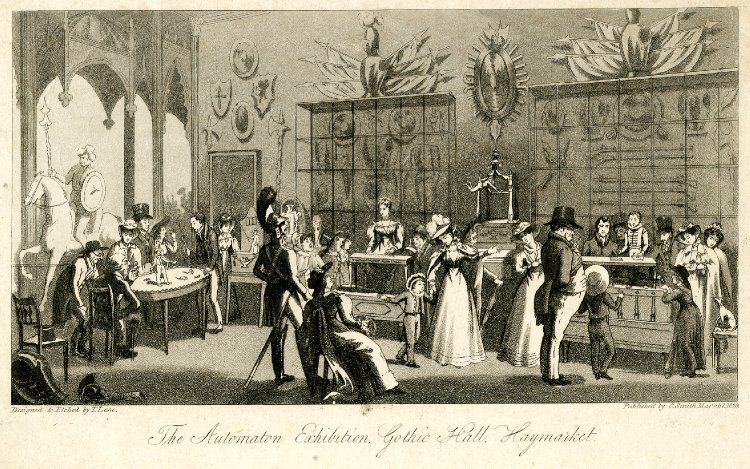
The 17th century saw the first automaton devices coming into popular imagination. In the 18th century, the mechanical toy took off, along with automata like an android flautist, that captured the intellectual and popular interest (Tiffany, 2000). Henri Mallardet was one of the makers building automated writers and draftsmen for exhibition tours during the late 18th century. And by the 19th century, circa 1800, Maillardet built his Juvenile Artist automaton and began exhibiting it.
Maillardet also had a “Musical lady, who performs most of the functions of animal life, and plays sixteen several airs upon an organized piano-forte” (Macmichael, 1906).

His first exhibitions took place in a house in Howland Street. They were moved by 1803 into the Great Room in Spring Gardens in Charing Cross. The museum included the Juvenile automaton, who wrote and drew, the musical lady, a rope dancer, and a Conjurer. There were also miniature automatons in the form of an Ethiopian caterpillar, an Egyptian lizard, and a Siberian mouse (https://markliebenrood.com/museums/lost-museums/maillardets-automatical-museum). By 1812, he was also exhibiting at the Philipstal and Maillardet’s Automatical Theatre” in Covent Garden on Catherine Street.

The automaton was considered to have intelligence because it was made to look like a boy (Lauckner, 1994).
Here is an article on the recent history of the automaton: https://gizmodo.com/182772/maillardets-automaton
These automaton’s no doubt inspired the experiments of the fathers of the computer, like Charles Babbage and Ada Lovelace.
Tiffany, D. (2000). Toy Medium: Materialism and Modern Lyric.
Lauckner, K and M. Litner. (1994). Computers–inside and out.
Macmichael, J. (1906). The Story of Charing Cross and Its Immediate Neighborhood.











